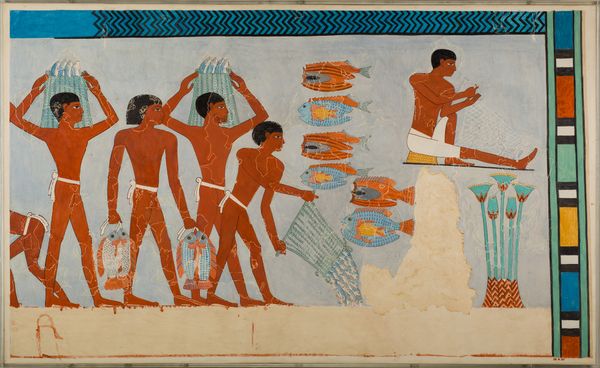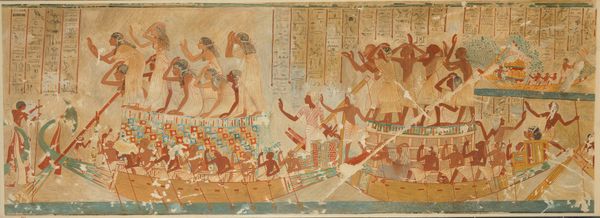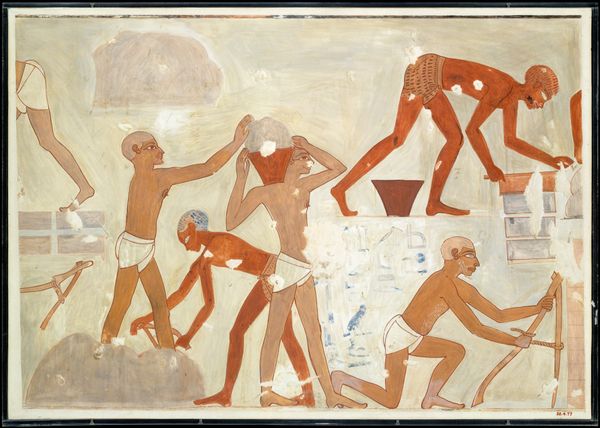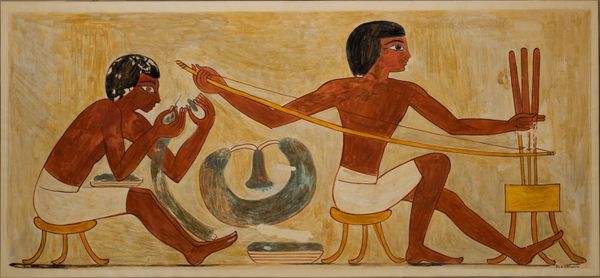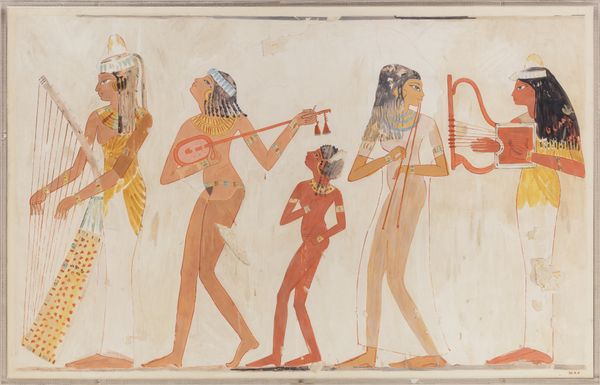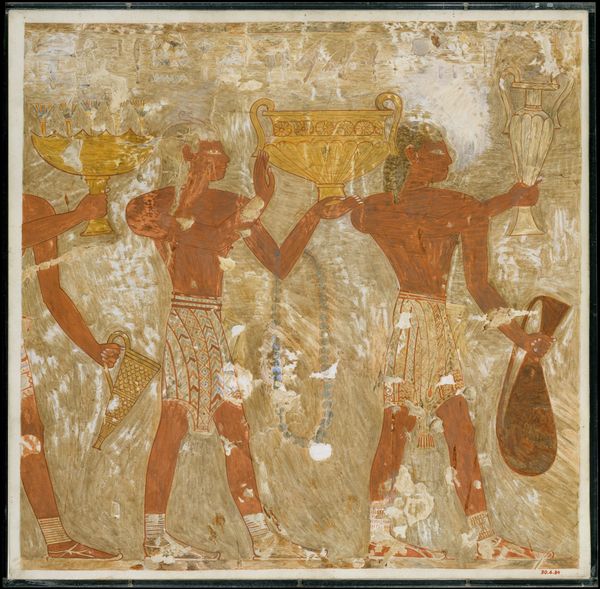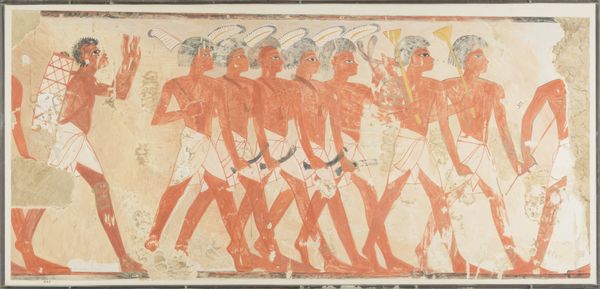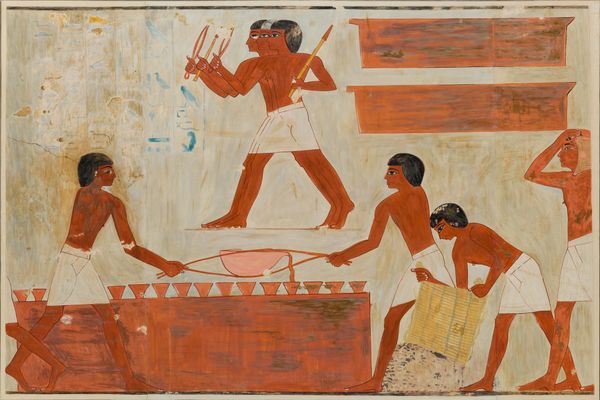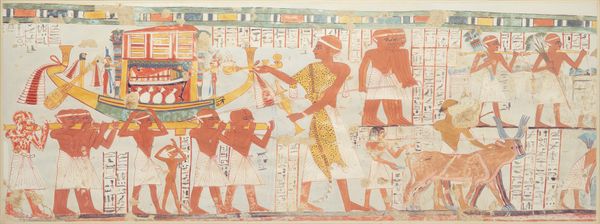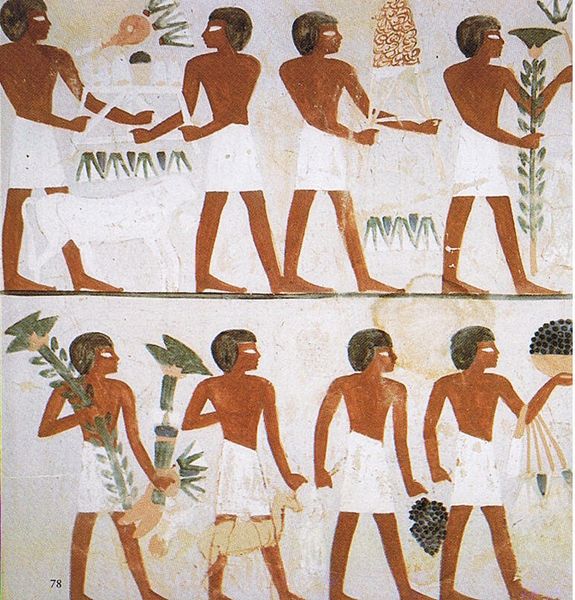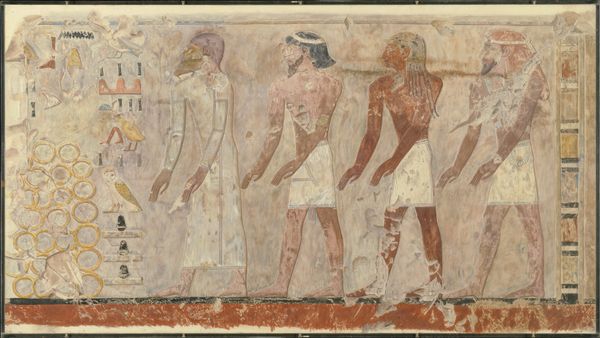
Wine and Papyrus for the Treasuries of Amun, Tomb of Rekhmire 1479 BC
0:00
0:00
painting, fresco
#
portrait
#
narrative-art
#
painting
#
ancient-egyptian-art
#
figuration
#
fresco
#
egypt
#
ancient-mediterranean
#
history-painting
Dimensions: facsimile: h. 52 cm (20 1/2 in); w. 130 cm (51 3/16 in) scale 1:1 framed: h. 55.2 cm (21 3/4 in); w. 132.7 cm (52 1/4 in)
Copyright: Public Domain
Curator: Today we’re looking at "Wine and Papyrus for the Treasuries of Amun, Tomb of Rekhmire," a fresco painting dating back to 1479 BC, currently housed at the Metropolitan Museum of Art. Editor: Immediately striking is the choreography of labor depicted. These figures, bronzed by the sun, are rendered with an economy of line, their movements precise as they haul their burdens. It speaks of a life lived closely with the land. Curator: Absolutely. As a fresco, the pigment was applied directly to wet plaster. Think of the collaborative labor involved – the plasterers, the pigment makers, and the artists themselves. These materials – the plaster from local limestone, pigments ground from minerals – rooted the artwork in its specific environment. It collapses divisions between art, craft and manual labor. Editor: And consider the cargo, wine and papyrus. Wine, in its reddish hue, undoubtedly linked to ritual, celebration, perhaps even symbolic blood. Papyrus, then the very stuff of recorded knowledge and administration. Look at how the elongated papyrus is being carried - it's a direct reference to high status, but the fresco does not shy away from showing the amount of people needed for one roll of papyrus to be moved! Curator: The fact that the tomb belonged to Rekhmire, who was essentially a Prime Minister under Thutmose III, brings the image’s social context to light. He was deeply involved with governing the resources and labor depicted. This makes one consider if Rekhmire would feel that he was the patron of his own picture. Editor: True, he becomes both patron and subject, an immortalised manager. But look at their physical exertion versus their idealized forms. There is a slight visual tension, even a political subtext of contrasting their muscular frames to the refined aesthetic associated with Egyptian nobility and the eternal afterlife. The repetitive form evokes continuous production, a reminder of society being organized to be stable. Curator: Well, in ancient Egypt, these kinds of artworks helped solidify hierarchies and expectations through constant portrayal. Editor: Ultimately, "Wine and Papyrus" speaks volumes through its blend of iconography and material reality. Curator: Indeed, and in doing so provides both a depiction and an almost modern document. Thank you.
Comments
No comments
Be the first to comment and join the conversation on the ultimate creative platform.
